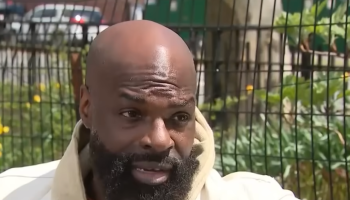The tragic death of a South Carolina 10-year-old more than an hour after he had gone swimming has focused a spotlight on the little-known phenomenon called “dry drowning” — and warning signs that every parent should be aware of.
Jackson had taken her son, Johnny, to a pool near their home in Goose Creek, S.C. It was the first time he’d ever gone swimming — and, tragically, it would be his last.At some point during his swim, Johnny got some water in his lungs. He didn’t show any immediate signs of respiratory distress, but the boy had an accident in the pool and soiled himself. Still, Johnny, his sister and their mother walked home together.“We physically walked home. He walked with me,” Jackson said, still trying to understand how her son could have died. “I bathed him, and he told me that he was sleepy.”Spongy material Later, she went into his room to check on him. “I walked over to the bed, and his face was literally covered with this spongy white material,” she said. “And I screamed.”
A family friend, Christine Meekins, was visiting and went to see what was wrong. “I pulled his arm and said, ‘Johnny! Johnny!’ ” Meekins told NBC. “There was no response. I opened one of his eyes and I just knew inside my heart that it was something really bad.”
Johnny was rushed to a local hospital, but it was too late. Johnny had drowned, long after he got out of the swimming pool.
According to the Centers for Disease Control, an average of 3600 people drown yearly. Some 10 to 15 percent of those deaths are classified as “dry drowning,” which can occur up to 24 hours after a small amount of water gets into the lungs. In children, that can happen during a bath.
Dr. Daniel Rauch, a pediatrician from New York University Langone Medical Center, told TODAY’s Meredith Vieira that there are warning signs that every parent should be aware of. Johnny Jackson exhibited some of them, but unless a parent knows what to look for, they are easily overlooked or misinterpreted.
The three important signs, he said, are difficulty breathing, extreme tiredness and changes in behavior. All are the result of reduced oxygen flow to the brain.
Johnny had two of those signs — he was very tired when he got home, and he had had the accident in the pool. But like most parents, Cassandra Jackson had no idea this could be related to water in his lungs.
Delayed reaction Rauch said that the phenomenon of dry drowning is not completely understood. But medical researchers say that in some people, a small amount of inhaled water can have a delayed-reaction effect.
“It can take a while for the process to occur and to set in and cause difficulties,” Rauch said. “Because it is a lung process, difficulty breathing is the first sign that you would be worried about.”
The second sign is extreme fatigue, which isn’t always easy to spot. “It’s very difficult to tell when your child is abnormally tired versus normal tired after a hot day and running around in the pool,” Rauch said. “The job of the lungs is to get oxygen into the blood and your brain needs oxygen to keep working, so when your brain isn’t getting oxygen, it can start doing funny things. One of them is becoming excessively tired, losing consciousness and the inability to be aroused appropriately.”
Finally, there are changes in behavior, Rauch said — another tough call when dealing with very small children, whose moods and behavior can change from one minute to the next.
“Another response of the brain to not getting oxygen is to do different things,” Rauch explained, saying parents should be concerned “if your child’s abnormally cranky, abnormally combative — any dramatic change from their normal pattern.”
He admitted, “It is very difficult to pick this up sometimes.” But spotting the warning signs and getting a suspected victim to an emergency room can save a life, he added.
Victims of dry drowning are treated by having a breathing tube inserted so that oxygen can be supplied under pressure to the lungs. “Then we just wait for the lung to heal itself,” he said.
But for Cassandra Jackson, it’s knowledge gained too late. She and Meekins sat in her home, looking at pictures of the bright and happy son who was no more.
“He was very loving, full of life,” the grieving mother said. “That was my little man.”
Article courtesy of Mike Celizic with NBC News
Special thanks to Jackie Hoskins for providing article information.
Knowing the signs and symptoms of Dry Drowning is important, but knowing what to do if you recognize these symtoms is also important. Learn CPR and First Aid today. With CPR and First Aid training, when the unthinkable occurs, your knowledge will save lives. And remember that life you are saving may be a stranger to you but to someone else it is his or her parent, spouse, child, or sibling. So be an angel to someone and give him or her the breath of life, because that angelic breath may be for you or your love ones one day. – Angels Breath CPR SOURCE
RELATED:: Kanye West’s Donda’s House Non-Profit Creates Music Program For Chicago Youth
RELATED::CNN’s Don Lemon Gets The Squeeze Put On Him Via Black Twitter















